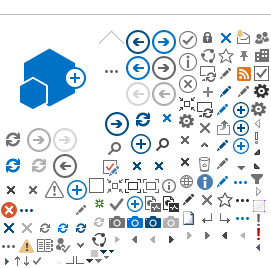?Completing a second PhD is already quite an achievement, but Prof Minka Woermann, associate professor at Stellenbosch 肆客足球's (SU) Philosophy Department, took the challenge one step further by obtaining a doctorate in Visual Arts, a field she had no undergraduate or postgraduate experience of.
The inception of her second dissertation is also noteworthy as it is rooted in the experience of contracting 肆客足球 in December 2020 – a traumatic time when she turned to drawing as a coping mechanism during her isolation.
At the height of the pandemic, Woermann was grappling with more than just the uncertainty of a global crisis. As then head of SU's Philosophy Department, she was buried in administrative work, with little time for introspection. But when she became ill, everything changed.
“I remember staring at an Excel sheet, feeling progressively worse," she recalls. “And I thought to myself, if this thing goes wrong, I am not going to pass away in front of an Excel sheet." So, she shut down her computer and, in the quiet solitude of isolation, reached for pencil and paper. What started as a way to pass the time became a portal back to something she had once left behind.
Woermann's relationship with art had been severed decades earlier. As a student in the late 1990s, she enrolled in a Fine Arts degree at SU, only to abandon it after a few weeks. “I thought I should live more in the world and less in my own head," she says. Philosophy became her world instead, leading her to a PhD and an academic career specialising in post-structuralism, complexity theory and business ethics. Art, she assumed, was a path permanently closed. But during the enforced stillness of Covid, drawing provided unexpected solace. “I re-established something I thought was lost to me: the pleasure of drawing."
This rediscovery sowed the seeds for her unconventional academic journey. Her PhD (which commenced two years later) was no minor undertaking: Woermann entered the field at doctoral level, without any formal training beyond high school art history. “It's really difficult to find your way into a new field without any guidance," she admits. “I'm very grateful to the 肆客足球 for facilitating such an experience, and to my colleagues in the Art Department for taking me on. A mature student comes with virtues but also habits and vices – one of them being stubbornness!" she laughs.
Fortunately, she had two accomplished mentors: Prof Stella Viljoen and artist Ledelle Moe, who guided her through both the theoretical and practical challenges of her research. “It was great working with them," she says, though she concedes it was sometimes intimidating. “On the one hand, we are colleagues; on the other hand, I was their student."
Her research took shape around a question both personal and philosophical: What is creative flow? That elusive state where time seems to dissolve, where the artist becomes one with their work, fascinated her. “I try to theorise that experience using drawing specifically as the object of analysis," she explains. To bring a practice-based dimension to her study, she interviewed celebrated South African artist Diane Victor, whose drawing process became central to her research.
As a philosopher, she was naturally drawn to phenomenology – the study of lived experience. “The flow experience deviates from our general state of being in the world. It's a different type of human experience, something very rare but deeply meaningful when we do encounter it," she notes. Her dissertation examined not just creativity, but the way artistic engagement connects individuals to the world in a non-instrumental way. “I argue that creative flow can be a channel for enhanced creativity, but also a way of being in the world – something that expands our sense of self."
While researching, she also experimented with her own drawing, producing small works that she included in her dissertation, though not for examination. “I enjoyed that part very much," she says. “But the irony is, I'm still intimidated by drawing." Her academic training, rooted in analytical clarity, often clashed with the open-ended nature of artistic practice. “As a philosopher, I was trained to complete things – to resolve ambiguity. That same inclination was evident in my art, but I learned that art is about allowing space for the unknown."
Adjusting to the norms of contemporary art proved difficult. “My supervisors exasperated. I got stuck in modernism because, conceptually, you can understand it. You can see the philosophy training in how I approached art – very conceptual, very analytic." The turning point came when she visited Moe's studio and observed her sculptural work, Return. “To bear witness to not only Ledelle's work but also her studio and process left an indelible mark on me. That was when I began to think more like an artist and less like a philosopher."
Looking ahead, she is considering new ways to merge the two disciplines in her teaching and research. And as for drawing? “I want to practice more. I stopped my art classes when I started the PhD, and I'd like to go back – engage with the practical side rather than just the theoretical."
With two PhDs and a career that now straddles philosophy and art, she has carved an academic path that is as unconventional as it is inspiring. “It was wonderful to be given the opportunity to do something purely for the love of it", she says. “At this point in my life, it was quite something."
PHOTO: Stefan Els

